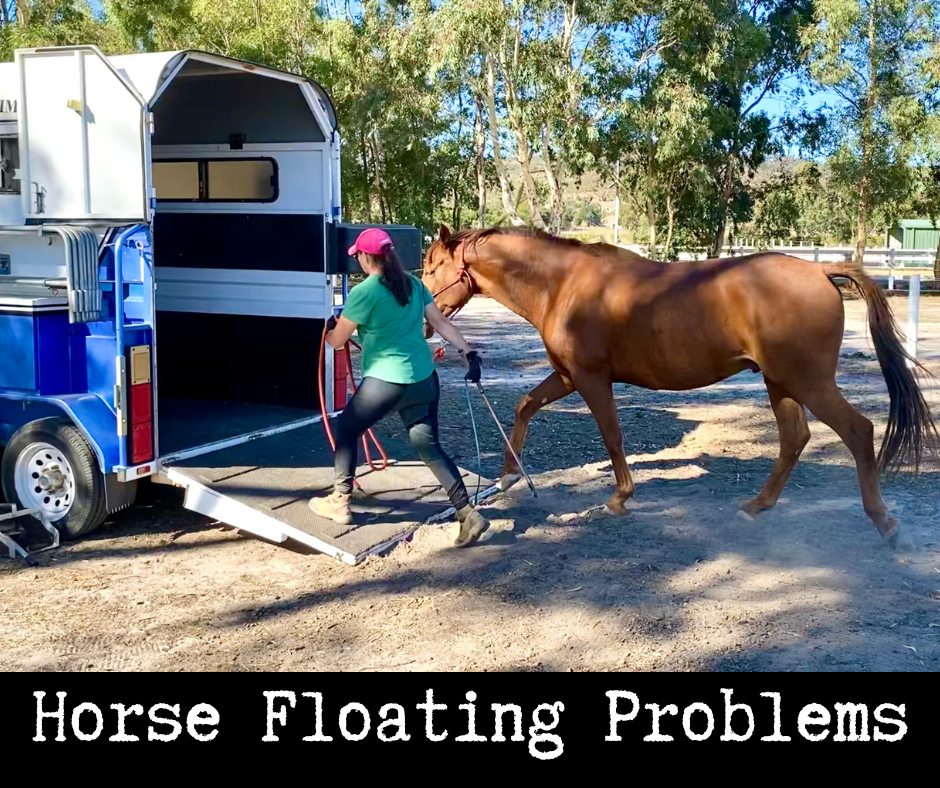solving horse float or trailering problems
Solving Horse Float or Trailering Problems
Training a young horse to walk on a horse float, be enclosed, travel and unload safely is one thing - helping a horse that has developed an aversion to being floated and dangerous behaviour connected with the floating process is another kettle of fish.
I have a lot of confidence dealing with both. In fact, I enjoy unpicking difficult behaviour and being able to help horses regain their confidence in floating.
What I really dislike is the pressure to float train or fix a bad floater in a single session. Sure, I can “get” a horse on a float in one session. I am really skilled in motivating horses with pressure and I can set the horse up to find the inside of that float more comfortable than any other option. After I have got the horse on in that “one session” I might be able to hand the owner the lead rope and the horse will then get on for them. Everyone will be very satisfied and impressed.
However, I hate doing it for two reasons.
1. Time restraint means you have to work with a greater risk of injury because the process can trigger a lot of conflict and stress in the horse. The safety of the surface, quality construction of the float, previous training of the horse and type of negative behaviour all add to the degree of difficulty and risk.
2. But the chance of that horse losing confidence with floating or all its dangerous behaviour popping back up again in a very short space of time is high. This is because once the motivation to go on the float is reduced and the skilled person that can dish out that motivation is gone, the feelings the horse has for being floated will start driving its behaviour.
Whilst there are times I just need to get a horse on a float e.g. to get to a vet, to be removed from a property, to be evacuated due to fire or flood, get home from a show etc. Floating is something that should be done with plenty of time and great care. Putting a solid groundwork foundation on the horse is essential. Teaching the horse to tie up well and then breaking the process of floating down into small steps that the horse can learn and feel successful and safe doing is the best way.
However, I believe my role in helping people float train or help their problem floater is even deeper than careful, thoughtful training. I passionately believe it is necessary to teach people HOW to float train their horse. Not just how to train a horse to be floated but the techniques and thought process behind dealing with problem floaters. This safe guards people from experiencing the horse refusing to get on the float just days after I had it going on and off the float like a dream. It also protects the horse from bad handling and decisions around floating which cause or re-trigger issues.
I am currently putting together a new course on “How to Float Train a Horse and Overcome Problems”. Whilst I was over in Perth I had the opportunity to work with a lovely young horse that had developed a serious floating aversion after a long haul journey across the country. He was very complex whilst he would load on most of the time he would be triggered to explode off and then because he was obviously worked hard outside the float, once he came off he was ready for a fight. So he would rush off and then become even more agitated, explosive and more difficult to load.
I had worked for three sessions with this horse prior to examining his floating behaviour. I had worked through round penning, tying up, leading and groundwork. This footage shows me in the first floating session just working quietly with him. Putting him off, letting him come off and then working calmly with him to eliminate this escalation in anxiety when he came off as he was expecting a fight.
Over the next 7 sessions my role was to understand his triggers, identify how to overcome them and identify the steps necessary to build his confidence. I then coach his owner in the development of her skills and decision making to put this into action.
So the message I wish to convey with this post is - if you want to eliminate floating issues stop expecting a trainer to fix it for you in one session. If you want a horse that loads safely and reliably allow time and empower yourself with skills that put you confidently in charge of the process.
